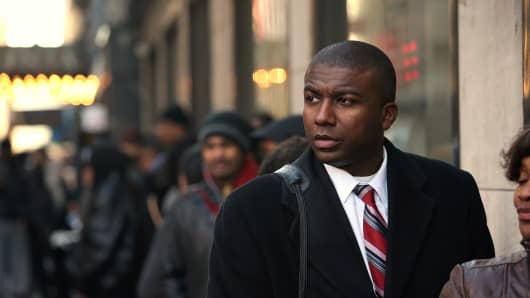Adding more than 8 million part time workers who can't find full time work, the unemployment rate becomes 14.4 percent. It rose above 14 percent in the wake of the financial crisis and remains stuck there.
Convincing millions of Americans they don't want a job or compelling desperate workers to settle for part time work has been the Obama Administration's most effective jobs program.
Growth remains weak, as most of the pickup to 2.7 percent in the third quarter was attributable to inventory build and a temporary surge in exports. Consumer spending and business investment weakened, substantially, and goods piled up warehouses—either in the fourth quarter or early next year, inventories will be adjusted and growth will slow. Exports will slow as Europe's recession continues.
Going forward U.S. GDP growth could dip below 2 percent. A budget deal to avert the fiscal cliff that raises taxes and slices spending by $200 to 250 billion, immediately, could send the economy into a recession and unemployment to 10 percent.
(Read More: Six Tips for Boomers Looking for Work)
The puzzle of reducing federal deficits to sustainable levels and accomplishing stronger growth and jobs creation, consistent with the underlying potential of the economy, remains difficult, because the $500 billion trade deficit on oil and with China continues to drag on demand and a tighter regulatory climate makes businesses cautious about investing in the United States.
The economy would have to add about 12.8 million jobs over the next three years—about 356,000 each month—to bring unemployment down to 6 percent. That would require GDP growth in the range of 4 to 5 percent.
Without better regulatory and trade policies, it is simply not possible to accelerate growth, create enough jobs and bring down federal deficits—all at the same time.
(Read More: Want Jobs? Cut Corporate Taxes: FedEx CEO)
Peter Morici is a professor at the Smith School of Business, University of Maryland, and former Chief Economist at the U.S. International Trade Commission.


